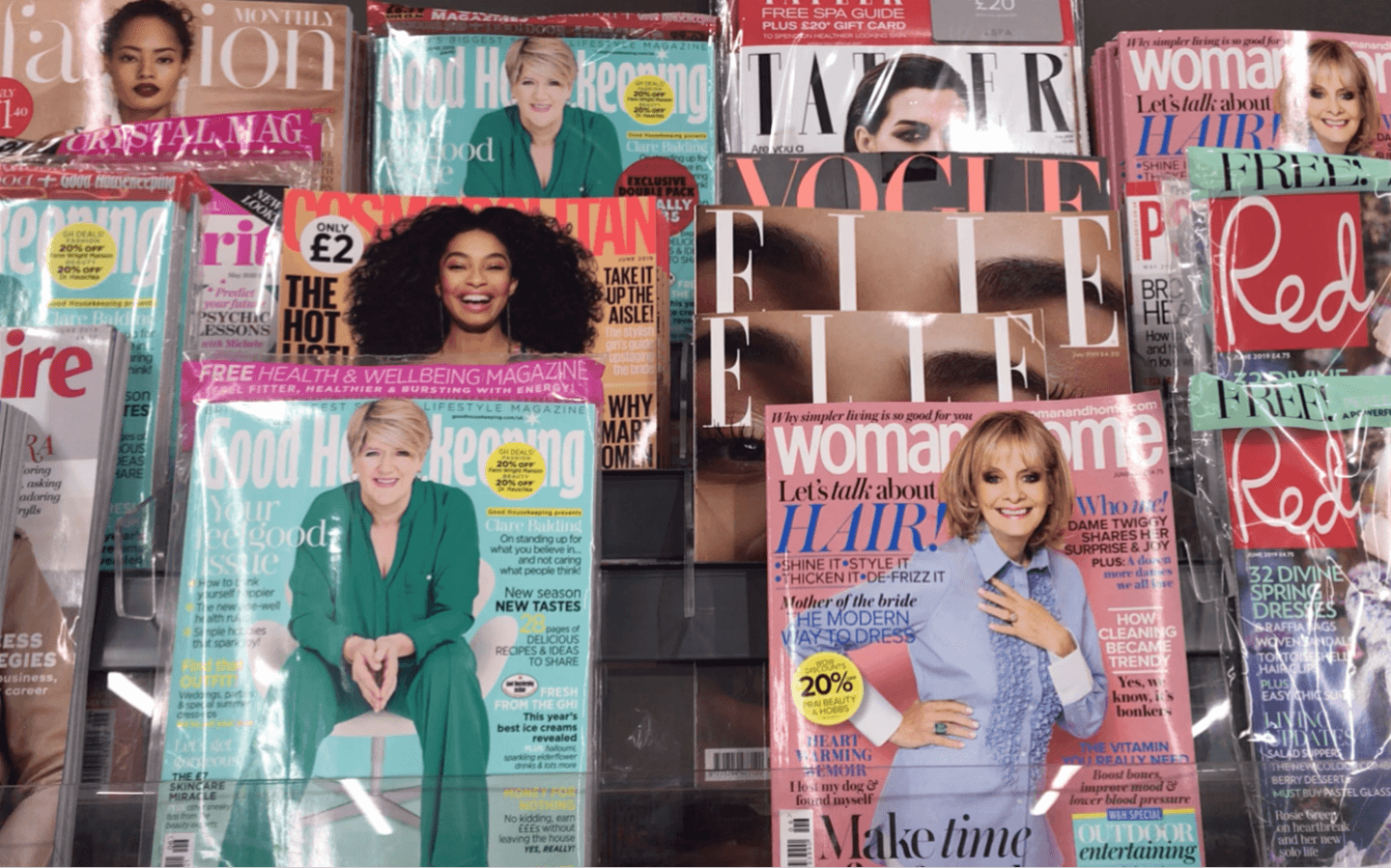Print magazines have been in decline for several years as readers now engage with content online, so our question is – do print magazines still have relevance in a digital era?

Display advertisements in luxury fashion magazines. Elle; Vogue; Marie Claire
The Business of Fashion state that consumers spend only a small amount of their daily media consumption time engaging with glossy magazines, yet brands continue to spend disproportionally on advertising.
Karen Bell, Editor-in-Chief of Belle Bridal magazine said that print magazines are absolutely still relevant. “I think more so than ever but especially specialised print magazines where there is a certain interest because we can take the content in.
“The amount of content that we are seeing online, there is research to suggest that we are not actually absorbing it and we are not remembering it, so I think that there is a definite relevance to print.” she said.
The Publishers Audience Measurement Company (PAMCo) provides valued audience research for in use for print and digital advertising trading in the UK. Their latest figures (January 2018 – December 2018) show that women’s monthly magazine brands reach 22 per cent of their audience via print and 21 per cent via phone.

PAMCo infographic. Audience Measurement for Publishers (women’s monthlies)
Journalism student Fatima Rokib who consumes her media online because it is “quicker and more convenient” says she understands that print magazines are still relevant because there are many people who enjoy the feel of a print magazine.
Press Specialist Niamh Lynch agrees. She said she thinks that print magazines are still relevant and that they have a cult following but that the younger generation isn’t as into it as they were before. “We’re trying to save the planet and I don’t think that’s doable when we have so much paper waste,” said Niamh.
The Business of Fashion state that top-tier magazines still hold “cultural legitimacy and conversation-driving power” and that digital platforms have failed to provide a suitable enough alternative for brands to abandon print altogether.
Karen Bell said that it is important to note that not everything you read online is legitimate. And that as innovative and as visual that digital can be you often don’t remember the content that you see online.
Many people say that the main advantages of online are that it is free, quick, accessible and convenient. However, others argue that print magazines have a longer “life”.

Women’s monthly fashion magazines
Print magazines can be found in doctors waiting rooms, magazine racks, at the hairdressers and with collectors. And many readers may pass the print magazine on to their friends or family or pick it back up to read again whereas reading something online whether on phone or on desktop, we often close the tab never to be read again.
Nicholas Coleridge, international president of Vogue at the time to Tatler owner Condé Nast, said that content on a tablet or iPad cannot match the experience of that “magazine moment”.
“It is very hard to replicate the physical allure of a luxury magazine on other platforms,” he said. “It is something to do with the sheen of the paper, the way that the ink sits on the page, the smell of money and desire that wafts off the page. Readers move into a different mode when they engage with a glossy. Advertisers understand this.”
Brides love flicking through a magazine states Karen Bell. “We have a special interest and we have a lot of pages and our features are very fresh and innovative. We do deliver what I believe brides want to see and it reflects in the way we present in our sales and in our following,” she said.
Niamh Lynch who consumes the majority of her media online says that she does love flicking through a magazine and that she does appreciate that they cost so much and that she doesn’t mind paying for a print magazine because of that reason. She said: “I don’t mind paying for a print magazine because of the cost it takes to print but I don’t think that when there’s an online platform its foolish to have so much paper waste.”
It is evident that print magazines do have relevance in the digital era. As said by Nicholas Coleridge: “Readers move into a different mode when they engage with a glossy.” Whether you’re a bride looking for inspiration or sat waiting to get your hair done – the time spent reading a print magazine is often valued and dedicated which is how they have remained so successful.
Karen Bell said to ensure a print magazine is successful you have to develop your brand, know your audience and develop your strategies to match your audience. “Keep your content fresh and make it relevant”. Karen stresses the importance of having an equally attractive digital brand: “Print and digital work together very well if both are reflective of the same brand. We spend as much time on our blog and working on Instagram. It is a 50/50 split.” she said.
